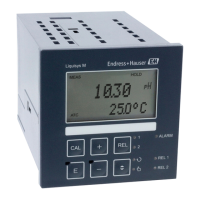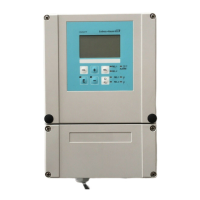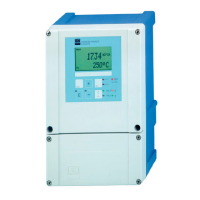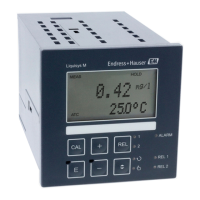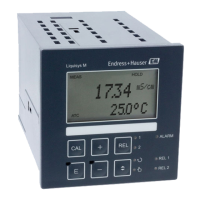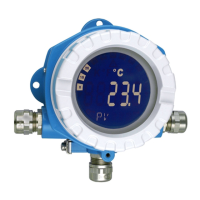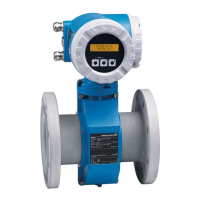Liquisys M CPM223/253 Commissioning
Endress+Hauser 73
6.8 Calibration
Use the CAL key to access the calibration function group.
Use this function group to calibrate the sensor. The calibration can take place in a number
of ways:
• By measuring in two calibration solutions with known pH value.
• By entering data for the slope and zero point
• In the case of ORP measurement, by entering the mV value or two different % values
Pay attention to the following:
• During commissioning, calibration is absolutely essential (except for sensors with
Memosens functionality) so that the measuring system can return precise measurement
data.
• If the calibration is aborted by simultaneously pressing the PLUS and MINUS keys (return
to C19, C25 or C36), or if the calibration is faulty, the original calibration data are used
again. A calibration error is indicated by “ERR” and the sensor symbol flashes on the
display.
Repeat calibration!
• For each calibration, the device automatically switches to Hold (factory setting).
• Any offset set is automatically deleted after the calibration is accepted.
• If the slope or zero point are outside the ranges given in C16 and C17, error 32 becomes
active for slope or error 33 becomes active for zero point. The electrode must then be
checked and replaced if necessary.
• If precalibrated digital sensors (Memosens functionality) are connected, the calibration
data are automatically transmitted to the transmitter.
Things to note elements when calibrating ISFET sensors
Switch-on behaviour
A control circuit is created when the measuring system is switched on. During this time
(approx. 5 to 8 minutes), the measured value adjusts to the real value. This settling
behaviour occurs every time the liquid film between the pH-sensitive semi-conductor and
the reference lead is interrupted (e.g. caused by dry storage or intensive cleaning with
compressed air). The settling time depends on the length of the interruption.
Sensitivity to light
Like all semi-conductor elements, the ISFET chip is sensitive to light (measured value
fluctuations). However, this only affects the measured value if the sensor is directly exposed
to sunlight. For this reason, avoid direct sunlight when calibrating. Normal ambient light
does not have any effect on the measurement.
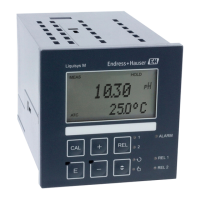
